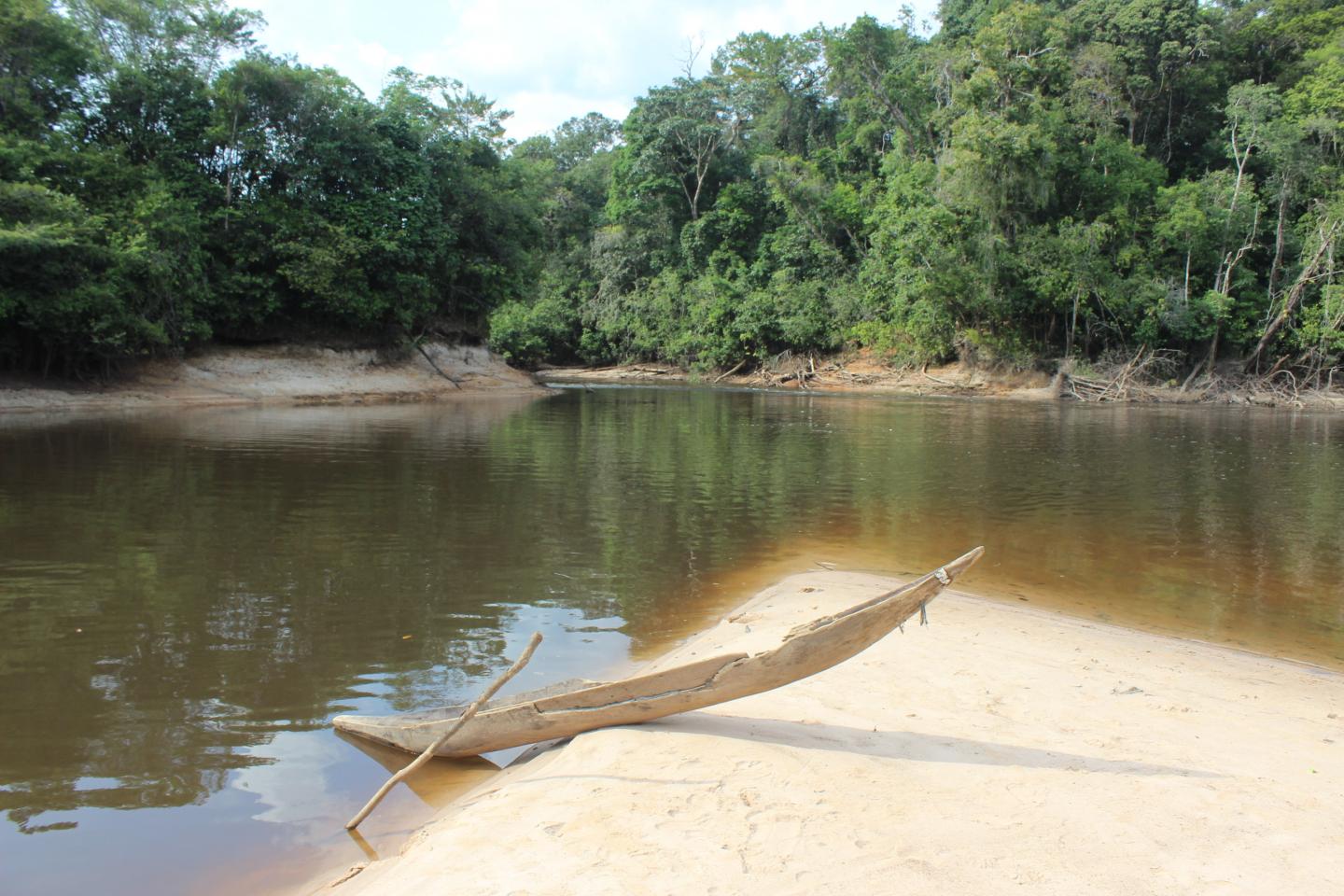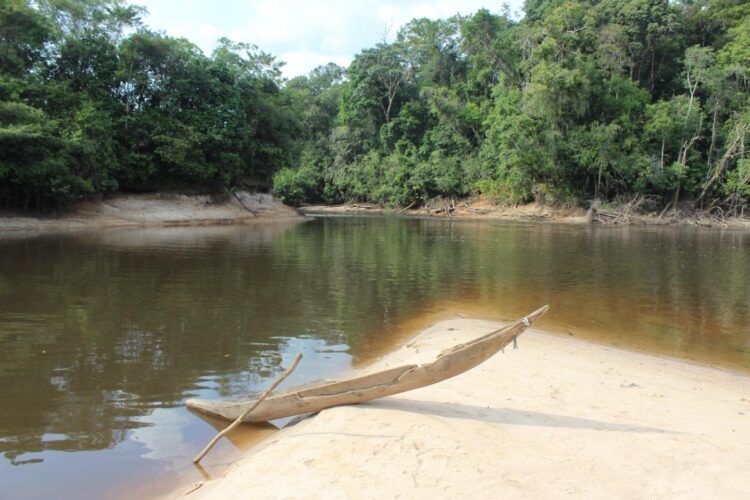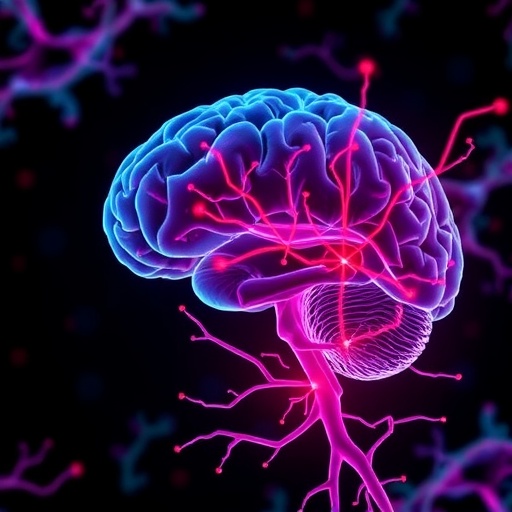
Credit: Photo by Torsten Krause (LUCSUS)
The current loss of biological diversity is unprecedented and species extinctions exceed the estimated background rate many times over. Coinciding with increasing human domination and alteration of the natural world, this loss in abundance and diversity is especially pronounced with – but not limited to – fauna in the tropics. A new publication from scientists at the Lund University Centre for Sustainability Studies (LUCSUS) in Sweden and the Leibniz Institute for Zoo and Wildlife Research (Leibniz-IZW) in Germany now explores the links between defaunation of tropical forests and the United Nations Sustainable Development Goals (SDGs). In a paper published in the scientific journal Ambio they illustrate how losing an abundant and diverse fauna undermines food security, increases the risk of infectious disease outbreaks, reduces the capacity of carbon storage and thereby weakens fundamental pillars of sustainable global development. In the light of these insights, they urge to give defaunation more attention in interdisciplinary research, forest policy and conservation.
Defaunation is a quiet process currently unfolding in tropical forests. It refers not only to the loss of animal species diversity owing to regional or global extinctions, it also includes the circumstance that species are much less abundant and cannot fulfil their ecological roles when they are limited to small numbers. “An empty forest is inherently different from a forest with a healthy animal community. What happens under the canopy of the world’s remaining tropical forests is of the utmost importance for achieving the SDGs”, say Torsten Krause from LUCSUS and Andrew Tilker from Leibniz-IZW. The scientists explored the links between tropical defaunation and four of the 17 SDGs by reviewing and analysing the available evidence about important social and ecological impacts of defaunation at local and global levels. They show that defaunation threatens critical ecological functions and jeopardises human well-being at different levels.
Nutrition and zero hunger (SDG 2): Wild meat is an important source of nutrition for local people who live within or in close proximity to tropical forests and who depend on it for sustenance. Defaunation increases hunger, reduces access to safe, nutritious and sufficient food throughout the year and enhances malnutrition of children. “It is important to realise that the link also acts as a driver for overexploitation of forest animals”, says Tilker. As tropical forest animals play a key role in pollination, a loss of insects, bats or birds can also threaten the yield of non-timber forest products such as fruits or nut-bearing trees – another pillar of food security and health in the tropics.
Good health and well-being (SDG 3): The past 18 months have shown that wild meat consumption can be of global public health importance because wild animals are hosts of and can transmit numerous, potentially fatal zoonotic diseases. “There is mounting evidence that the human-driven loss of tropical forest fauna can significantly increase dispersal of host, parasite and vector species, thus enabling better contact to people and a greater frequency of infectious disease outbreaks”, explains Krause. “Leaving faunal communities in tropical forests relatively undisturbed (and in a healthy state) is pivotal to global health.” Additionally, a rich and resilient forest fauna is often of great culturally significance and serves as a source of inspiration in art and literature – and contributes to achieving goal 3.4 “to promote mental health and well-being” under SDG 3.
Climate action (SDG 13): Forests are one of the world’s most important terrestrial carbon sinks, and maintaining and protecting healthy forest ecosystems is critical to mitigating climate change. Intact faunal communities play a crucial role to maintain such forest ecosystem functions because of the multitude of ecological interactions between plants and animals. “Defaunation changes and loses some of these interactions. Empty forests are much less resilient, for example because they have no seed dispersers”, Tilker explains. Recent investigations have demonstrated the direct link of faunal diversity to carbon storage capacity: When large-seeded animal-dispersed trees decline, forests store less carbon. “Defaunation therefore poses an indirect but significant threat to efforts that address climate change.”
Life on land (SDG 15): The loss of fauna from the world’s tropical forests is directly linked to the ability to protect and sustainably use terrestrial forest ecosystems and their biodiversity in future. Defaunation, therefore, is a direct threat to targets within SDG 15, for example target 15.2 (by 2020, promoting the implementation of sustainable management of all types of forests, halt deforestation, restore degraded forests and substantially increase afforestation and reforestation globally) and target 15.5 (taking urgent and significant action to reduce the degradation of natural habitats, halt the loss of biodiversity and, by 2020, protect and prevent the extinction of threatened species). “In this context, defaunation does not hamper achieving a goal, stopping defaunation is the primary goal and thereby a fundamental pillar of sustainable global development”, Krause and Tilker conclude.
In the light of these insights, defaunation needs to be given more attention in various areas of research, environmental governance and conservation at global and local levels. As the consequences of tropical defaunation are far-reaching, but uniquely complex – as the wild meat dilemma illustrates – more interdisciplinary research is needed to fully understand the implications of the process. “The loss of tropical forest fauna has countless ecological, evolutionary, socioeconomic, and cultural repercussions and undermines the achievement of the SDGs, so it is important for scholars studying tropical forest biodiversity to recognize that forests are inherently social-ecological systems”, says Tilker. Based on such evidence, holistic and location-based conservation approaches need to be designed in order to mitigate and reverse defaunation. Local socio-economic systems have to play an important role for the success of conservation strategies. Defaunation has also been largely overlooked in forest conservation policies and needs to be directly addressed in forest governance strategies, stimulated for example by including fauna in forest-focused global climate finance. Last but not least, effective action to curb and control the commercial trade of tropical wildlife is a major cornerstone to tackle defaunation of forest ecosystems.
###
Media Contact
Andrew Tilker
[email protected]
Related Journal Article
http://dx.





